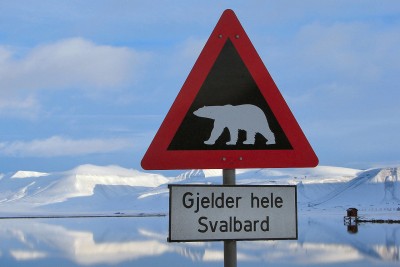Researchers from the Norwegian Polar Institute had some good news to report just in time for the Christmas holidays: Polar bears seem to be making a comeback on the Arctic islands of Svalbard and elsewhere in areas of the Barents Sea under Norway’s control.

Despite dramatic changes in ice conditions, and warmer temperatures that are disrupting their habitat, new figures show that the polar bear population on Svalbard has increased. News bureau NTB reported Wednesday that researchers believe the polar bears may be adapting to the effects of climate change.
Researchers from Norsk Polarinstitutt in Tromsø have conducted their first census of sorts since 2004 regarding the polar bear population on Svalbard and in the Norwegian portions of the Barents Sea. “The population has increased,” project leader Jon Aars of the polar institute told NTB. “The Norwegian polar bear population is now calculated to include around 975 bears, compared to 685 11 years ago.”
Aars stressed that there’s a degree of uncertainty in the numbers, but he thinks the researchers have the necessary basis to claim that there’s been an increase in the total.
Also in ‘good shape’
He also said the polar bears spotted and counted were in “good shape.” He said the ice “came early in the fall of 2014 and lasted a long time.” That means a lot for the bears, he noted.
Ice conditions in the Barents have been poor in most years since 2000, and researchers have been extremely worried about the state of the polar bear population. “It’s positive to see that the polar bears have managed well, under conditions that have been worse for several years,” Aars told NTB.
That doesn’t mean the danger is over, though, he stressed: “If we get several more years in a row with a lack of ice, the situation can quickly become critical.”
Still an endangered species
Polar bears were made an endangered species on Svalbard in 1973, after more than 100 years of legal hunting. The population then increased relatively quickly but the years with poor ice conditions sparked uncertainty over whether the population would stagnate.
Aars noted that the bears will eat a lot in good years, and live off their own reserves in bad years. “They can survive for more than half-a-year without eating, even when they bear cubs,” he said.
He added that the bears aren’t utterly dependent on the ice and can survive on land as well. The question now is whether and when the population will begin to decline because of a lack of ice.
Aars said there was a total of around 2,650 bears in the entire Barents Sea in 2004, including the Russian-controlled areas. Russian researchers participated in the 2004 census but declined to cooperate in last year’s, possibly because of increased political tension between Russia, Norway and other western countries.
“So we don’t have the full picture,” Aars said, “but regardless, this year’s study shows that (Norway’s) bears are managing well now.”
newsinenglish.no/Nina Berglund

